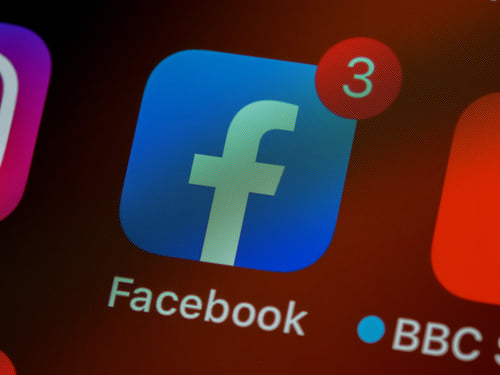
The Do's And Don'ts Of Social Media Marketing
 Using social media for marketing purposes is a trend that isn’t going away anytime soon. In fact, year after year, global social ad spending is increasing: From 2014 to 2016, spending for social media marketing nearly doubled: from $16 billion in 2014 to $31 billion in 2016.
Using social media for marketing purposes is a trend that isn’t going away anytime soon. In fact, year after year, global social ad spending is increasing: From 2014 to 2016, spending for social media marketing nearly doubled: from $16 billion in 2014 to $31 billion in 2016.
70% of people in North America use social media daily, and they are using social media more time each day than they spend watching television. This all means that using social media to market your company really is a worthwhile investment.
When done correctly, using various social media accounts can help you develop deeper personal relationships with your customers. It also can quickly spread the word about promotions, values, and deals, create a stronger brand persona, and increase brand engagement. But what does it mean to do social media "correctly?"
Using social media to promote your business is different than using your personal Facebook account to share pictures of your kids on the first day of school. It requires finesse, and a thorough understanding of what your customers are looking for. There are countless ways to use social media to connect with your audience; some better than others. Let’s explore some of the best (and worst) social media practices.
Do Remember the Best Times to Post
Just the timing of your posting can be an art in itself. Think about the people who you follow, or the people on your friends list who post everything they do, all day long.
Not always great, right? You want to be selective about what, when, and how frequently you post, so you aren’t inundating your followers with too many posts. Also, be sure you are posting when the most people will actually see your content.
There are varying recommendations on when is the best time to post to your company’s social media pages. Hootsuite says that between 9:00 and 12:00 AM early in the week is a great time to post. Hubspot suggests posting around 9:00 AM for Facebook and Twitter, and around 5:00 PM for Instagram. There’s lots of data out there suggesting when is the most effective time to post.
Do your research and then see what times work best for you. When do you get the best results from a post?
You don’t have to stick hard and fast to this rule. If you have breaking news, you should share it right away. And you can certainly post during a time of day that isn’t considered a "peak" time. Eventually, you’ll start to learn the best time to interact with your audience and have a better sense of when you have better results.
Don’t Ignore One (or Any) of Your Accounts
Have you started multiple accounts on multiple social media platforms to "keep up with the times?" If all you’ve done is start an account, but you haven’t done much of anything else with it, not only is it not serving your brand, it could actually harm your reputation.
For example, if a potential client attempts to contact your company with a question via an ignored social media account, you could leave them feeling abandoned and without an answer. Or, a visitor to your abandoned Instagram account may feel like you’re not approachable or not current.
If cyber tumbleweeds are rolling through the main street of your account, it’s doing nothing to positively represent your brand and may give your brand the appearance of inaction, inattention, or neglect. Not good.
Instead:
Only sign up for as many accounts as you can reliably handle, and when you post on one account, post something on all your accounts. Automation apps and software can help you do this.
Too busy for Twitter, or not interested in regularly posting videos or updates to Snapchat? That’s absolutely okay. If you have a good grasp on just one or two social media platforms, that’s great! Take on whatever it is you can manage well, and your followers and clients will see your social media accounts as an additional way to consistently interact with and learn about your brand.
Do Use Various Kinds of Media
Just like the way you don’t publish text-only blog posts (because that would be boring), you also want to vary the kinds of ways you are delivering information to your audience. With just a smartphone, a video editing app, and a YouTube account, you can create videos to share on your various social media platforms.
There are tools available all over the internet to create your own shareable infographics and even more information out there on how to make a great one. You can also share photos and short videos on Instagram, Snapchat, Pinterest, Twitter, and Facebook, or even "go live" to make an announcement, share information about a sale or promotion. In fact, 82% of people prefer a live stream from a brand to social posts, and 80% of people prefer a live video to a blog post.
Also, 62% of audiences are more likely to buy a product online after watching a video. You can’t ignore the fact that video, especially live streaming, is highly effective.
Think of it like creating a really delicious tossed salad: The more quality ingredients you include, the more interesting and delicious your salad can be. The more varied your posts, the more captivating they will be for your customers.
Don’t Ignore Comments or Questions
Social media is supposed to be just that: Social. Your followers and customers are going to want to use social media to engage with you. You will notice an influx of questions and comments in the hours, and even days, following a post, and you have to know how to handle them.
If you receive an overwhelming response from the community on one particular post, that can be stressful. Do you have to respond to every single comment? The answer is "no." Replying to every comment is not only time consuming, but unnecessary. But there are times you should definitely respond.
Sometimes, followers will use your accounts to ask questions. And sometimes you may end up with a negative review. These questions and reviews are opportunities, and you can’t ignore them. Responding to a negative review or comment is a great way to engage with a dissatisfied customer and turn around their impression of your brand.
And answering questions engages with audience members who are looking for assistance, and lets them know that your company cares about helping their clients.
Instead:
Take a second to cool down before you respond to a negative comment - you can’t fight fire with fire. Search for the true intent or real frustration behind the words in their post, and thoughtfully, authentically respond to try and help right the situation.
You can even invite a dissatisfied client to contact you directly. This is a great opportunity to mend your working relationship, and model your outstanding customer service to any other followers who have noticed the negative comment.
Do Offer Solutions
One of the best ways to engage with your audience is to help them solve an existing problem. If you’ve done your research about your buyer persona, you probably already have a decent idea of the problems many of your customers are hoping to solve. So how can you solve them?
Your social media posts can be a great opportunity to present easy, clickable solutions to solve your audience’s problems.
Don’t Forget to Include Links
You must include links to a landing page, a blog page, a page to shop, a contact us page - or anything specific that will get your followers over to your website. Your goal on social media is to connect with your followers, but it’s also to convert followers to customers!
The best way to help them do that? Include links in your posts to your website so they know where to go, and so it’s easy to get there.
If a customer has to loop back to your bio or search for a link, you’ll lose them. One great way to make a link easy?
Try the "swipe up" feature on your Instagram story. Hubspot claims that Instagram stories have accounted for an increase of 10 additional minutes that people spend on the app. But this doesn’t mean anything if they can’t get to your website! If you have 10,000 or more followers already, adding a "swipe up" should be easy to do.
Don’t have quite that many followers yet? Here are a few ways to link via Instagram if they haven’t given you the magical "swipe up" feature just yet.
Do Make It (Somewhat) Personal
Your social media accounts are a great way for your followers and customers to get to know your company better. With this being said, you should consider your online tone of voice, and how it matches your brand’s mission.
Sparknotes is a great example of this. Because they cater to students, their social media posts involve a lot of fun and funny memes to increase engagement. Their posting style and sense of humor match that of their audience.
But why does this humor-based marketing work for them? Because it matches their "buyer persona," and it’s authentic to Sparknotes and to their followers. If your company’s tone of voice doesn’t fit this style, it won’t ring true with your audience. Find what works for you: Empowering, motivational posts, humorous posts, news-based posts. Whatever it is that matches your brand, that what you should go with.
You can also use your social media accounts to introduce your audience to your team. Try an Instagram takeover from a dynamic employee during a promotion, or spotlight a team member’s exceptional work on your accounts. Let your customers in and let them get to know you.
Social media can be a fantastic tool that can further connect existing customers to your brand, and help you find new customers in the process -if you do it right. The main "Do?" Be authentic. We all spend so much time on social media that we can tell when a person or brand is trying too hard to create an online presence that isn’t authentic to who they are.
So if you use your social media accounts to show off your brand’s "true self," and you’re smart about the kind of content you share, you can’t go wrong.
I help businesses and marketers build marketing and sales systems that drive leads and scale with ease.
Not sure where to start? Take my marketing quiz and get personalized next steps.



